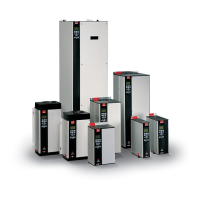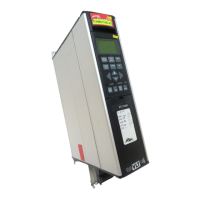
Do you have a question about the Danfoss VLT 5027 and is the answer not in the manual?
Details mandatory safety rules for operating the VLT 5000 series.
Explains hazards and precautions to prevent unexpected motor starts.
Provides key electrical and physical specifications for VLT 5000 series.
Details electrical parameters such as output current, voltage, and power.
Guidelines for physical mounting, including clearances and enclosure types.
Instructions for connecting the AC power supply, including safety grounding.
Guidance on RFI switch settings for EMC performance based on mains connection.
Details on connecting brake cables and sizing them for brake torque.
Explains the function and terminal assignments for relay outputs.
Information on using an external 24 V DC supply for control card and LCP operation.
Overview of the Local Control Panel (LCP) for operation and monitoring.
Details the LCD display layout and how information is presented.
Explains how to choose different display read-out states for variables.
Explains the two programming modes (Menu, Quick) and how to change parameter values.
Detailed access and navigation through all parameters using the Menu mode.
How to select parameters using the LCP keys.
Explains display messages for warnings, including their causes and typical actions.
Guides users through common operational issues and provides troubleshooting steps.
Explains the purpose and scope of CE labelling for VLT drives.
Discusses installer responsibility for EMC compliance and Danfoss installation guidelines.
Provides guidelines for good engineering practice to ensure EMC-correct electrical installation.
Recommends braided screened/armoured cables for optimal EMC immunity and emission.
Helps select the correct configuration based on the application needs.
Outlines parameter settings for various control modes like Speed and Torque.
How to use single external or preset reference signals for control.
Explains how to combine multiple reference signals using Sum, Relative, or External/Preset methods.
Explains how ambient temperature affects continuous output current and required derating.
Discusses motor cooling limitations at low RPM and methods to compensate.
Details how motor temperature is monitored using thermistors or calculations.
Lists the standards and conditions under which the drive was tested for vibration and shock.
Formula and method for calculating the overall system efficiency.
Covers mains supply interference, harmonics, and power factor calculations.
Lists factory default settings for parameters, including range and data type.












